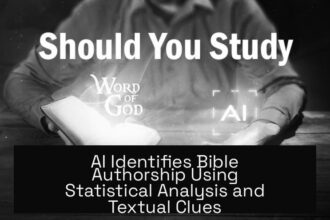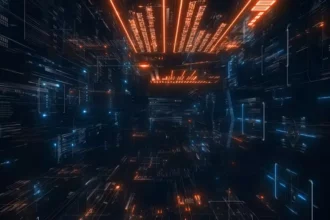Table of Contents
ToggleDead Sea Scrolls Analysis May Force Rethink of Ancient Jewish History
Recent analysis of the Dead Sea Scrolls suggests some scrolls may be up to a century older than previously believed, which could change our understanding of ancient Jewish history and text production. This new finding challenges existing timelines and raises questions about the origin and authorship of these ancient manuscripts.
Revising the Age of the Dead Sea Scrolls
Previous estimates dated the scrolls within a specific timeframe. However, new analysis indicates some scrolls could be 100 years older. This adjustment challenges long-held views about when and how these texts were created and copied. Understanding the timing better helps historians trace the development of Jewish religious thought.
Modern Dating Techniques
The updated dating relies on two main methods:
- Artificial Intelligence (AI) handwriting analysis
- Advanced radiocarbon dating
AI can identify subtle handwriting styles consistent with older periods, while radiocarbon dating offers precise age estimates. Combining these techniques enhances accuracy beyond traditional methods.
Implications for Biblical Authorship
Some scrolls contain texts from the biblical books of Daniel and Ecclesiastes. The review suggests these may be copies made during the original authors’ lifetimes. This possibility supports the idea that these texts circulated earlier than previously documented.
This could reshape scholarly views on the historical context of biblical authorship and the transmission of sacred texts within ancient Jewish communities.
Key Takeaways
- The Dead Sea Scrolls may be up to 100 years older, revising historical timelines.
- AI handwriting analysis and radiocarbon dating enhance dating accuracy.
- Scrolls of Daniel and Ecclesiastes might originate during the authors’ lifetimes.
- Findings affect understanding of ancient Jewish textual production and biblical authorship.
Dead Sea Scrolls Analysis May Force Rethink of Ancient Jewish History
The recent reassessment of some Dead Sea Scrolls suggests they could be up to a century older than we thought, shaking the ground beneath our assumptions about ancient Jewish history and text production.
That’s quite a claim, isn’t it? But let’s unpack what this means and why it’s such a big deal for historians, theologians, and curious minds.
The Dead Sea Scrolls are a priceless treasure trove of ancient manuscripts discovered in the mid-20th century near the Dead Sea. These texts include biblical manuscripts and writings from the Jewish sect known as the Essenes. For decades, scholars have used traditional radiocarbon dating and paleography to date these documents roughly between 250 BCE and 70 CE.
Now, a fresh wave of analysis using state-of-the-art tools is challenging that timeline.
How Did They Do It? Enter AI and Modern Science
The new age assessment hinges on two cutting-edge techniques: artificial intelligence analysis of handwriting and advanced radiocarbon dating methods. Yes, computers decoding scribbles from two millennia ago!
AI algorithms meticulously analyze the handwriting styles across multiple scroll fragments, detecting minute variations and consistencies that human eyes might miss or misinterpret. This process helps establish a more precise chronological framework. Radiocarbon dating technology, meanwhile, has improved in accuracy and sensitivity, allowing for finer distinctions in dates that were once blurry.
Combining these techniques paints a clearer, more reliable timeline. The revelation? Some scrolls might be as much as 100 years older than previously thought, pushing the window of their creation back further into the Hellenistic period.
Why Does Being ‘Older’ Matter?
It’s tempting to think an extra century is just a detail, but in historical terms, timeline shifts like this have seismic implications. First, it nudges us to rethink when and how these texts were copied, shared, and preserved.
If the scrolls emerged earlier, it implies that Jewish scribal culture and textual transmission were already very sophisticated in periods scholars had underestimated. The community that produced these manuscripts might have been more deliberate and systematic than we gave them credit for.
And the story gets better.
Biblical Texts Like Daniel and Ecclesiastes: Closer to the Original Author?
The research suggests that some scrolls, including those containing the biblical books Daniel and Ecclesiastes, could actually be copies made during the lifetimes of the books’ original authors themselves.
Imagine holding a copy of a book written in your lifetime, rather than a later reproduction. This notion is profound. The earlier scholars thought these were texts copied long after the compositions themselves, forcing a reliance on oral tradition or unofficial texts for intermediate transmission.
If these scrolls are contemporary with the authors, it provides a near-direct link to the words as the ancient writers intended. This adds authenticity and changes how we view the process of canonization—a filter that forms what we now call the biblical canon.
Practical Takeaways & Why You Should Care
- Historical accuracy matters. Understanding precise timelines helps rewrite histories and dispel myths.
- Technology transforms humanities. AI isn’t just for self-driving cars; it’s breathing new life into ancient texts.
- Feel connected to history. If these scrolls are older, they illuminate a cultural and religious life closer to the very dawn of Judaism as many know it.
So, What Now?
These findings encourage renewed investigations into the scrolls, pushing scholars toward multi-disciplinary studies that blend ancient history, religious studies, and computer science. The Dead Sea Scrolls become a dynamic lens, not a static relic.
It also invites everyone intrigued by human heritage to consider how much we still don’t know. Perhaps your favorite biblical story is packed in manuscripts just a breath away from originality, preserved for centuries in desert caves and finally brought to modern light.
Thought-Provoking Questions to Ponder
Could other ancient texts benefit from AI and similar methods? How might that reshape history?
Does knowing that biblical books like Daniel and Ecclesiastes may have contemporaneous copies change how those texts affect your worldview?
What assumptions about ancient Jewish history might we need to revisit in light of this?
As technology evolves, so too does our grasp of the past. The Dead Sea Scrolls remind us history isn’t a fixed story etched in stone but one continually rewritten by discovery and insight.
And for once, this rewriting involves less guesswork and more intelligent analysis—pretty cool, right?
What new methods were used to analyze the Dead Sea Scrolls?
Researchers used AI to examine handwriting styles and modern radiocarbon dating. This helped provide more precise dates for the scrolls, improving on older techniques.
How might the new dating affect our view of the Dead Sea Scrolls’ age?
Some scrolls might be about 100 years older than believed. This changes ideas about when these texts were created and copied.
Why is the possible age change important for biblical history?
If scrolls with Daniel and Ecclesiastes were copied during the authors’ lifetimes, it suggests these texts were circulated earlier than assumed. This shifts the timeline of biblical authorship.
Does the analysis suggest all scrolls are older?
No, only some scrolls may date back further. Others’ dates remain consistent with past estimates, focusing change mainly on select texts.
What does AI handwriting analysis reveal about these scrolls?
The AI tools detect subtle differences in writing styles, showing that multiple scribes copied texts, possibly over a longer period than once thought.





